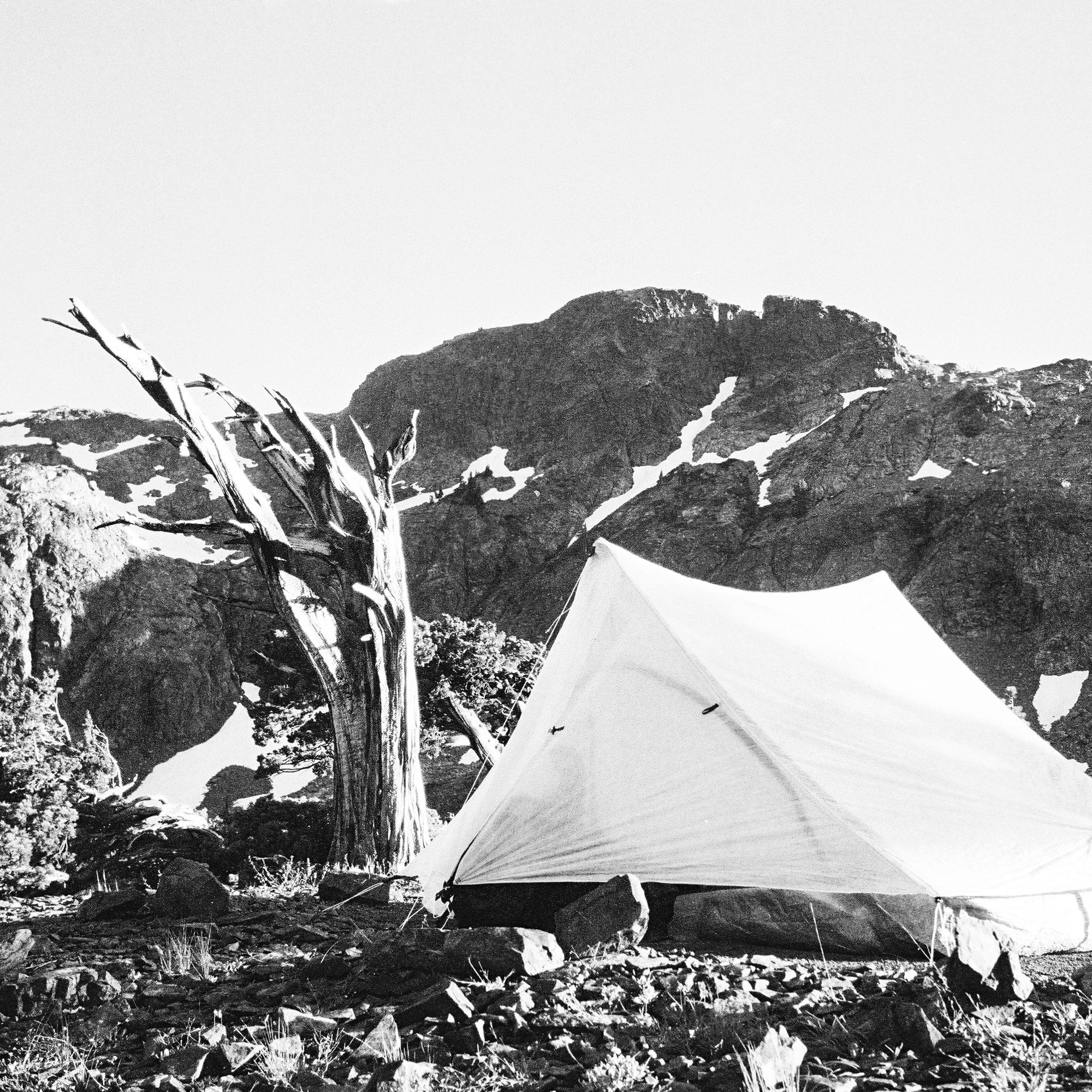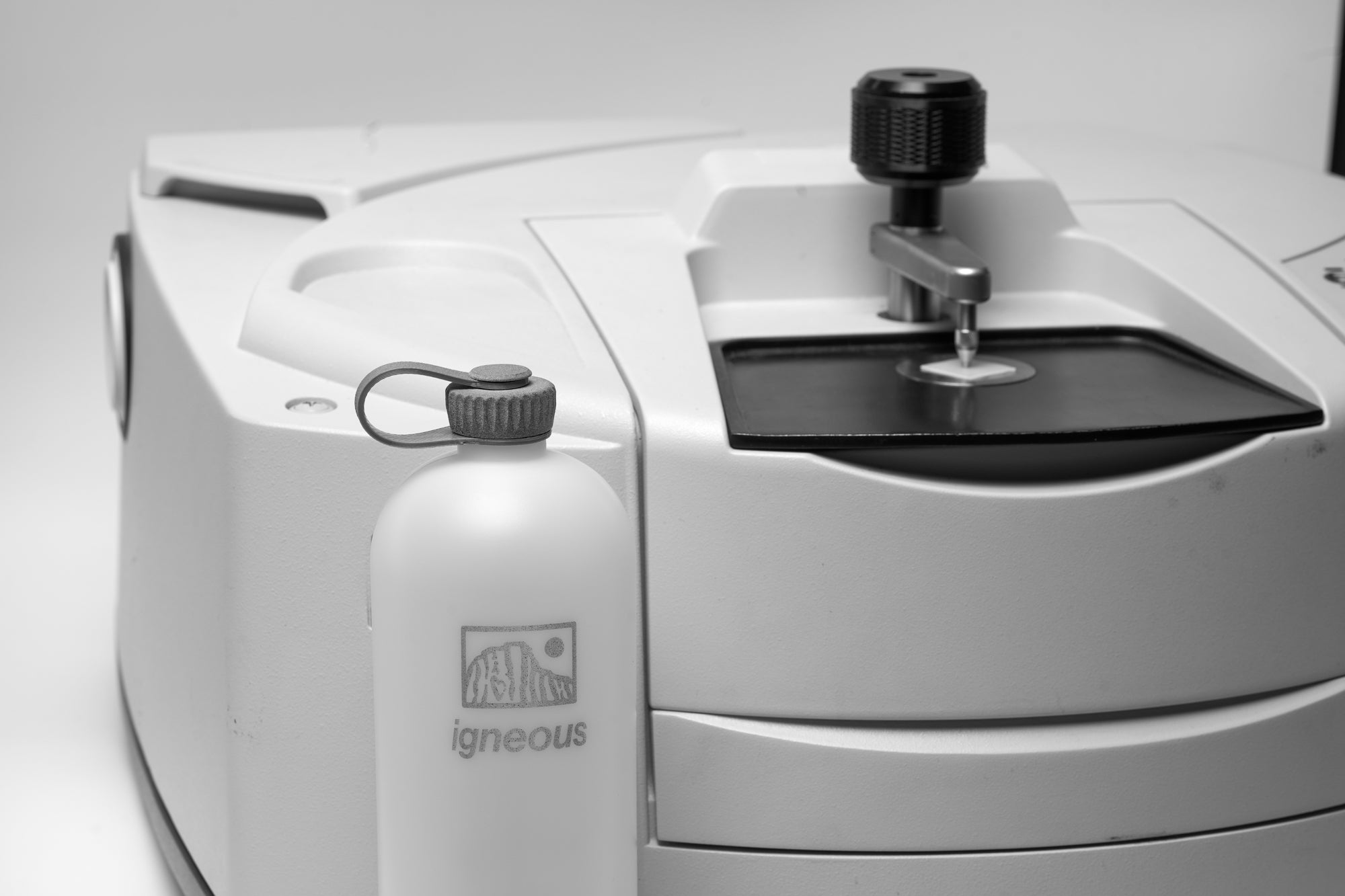Why line discipline matters
A well-managed camp line system saves minutes at setup and prevents the little failures—tangles, slack guys, tripping hazards—that turn into bigger ones in wind and rain. Igneous approaches this with three compact tools that cover storage, visibility, and on-site handling: an ultralight 7 g carbon fiber spool to organize line without adding bulk, a 1.8 mm reflective nylon cord that is easy to see in low light yet still truly packable, and a 10 g Tent Tool that both seats Y-stakes and sleeves a cracked tent pole so you can keep moving. Each piece is simple on its own; together they create a small, repeatable system that stays tidy in the pack and predictable in the field.
Carbon fiber spool — capacity and control
The spool is built for hikers who count grams but still want their camp hardware sorted. It weighs just 7 g and uses a 1.8 mm carbon fiber laminate (no edge finish) shaped to carry lines in the 1.5–2.5 mm range. Clean capacity is about 50 yards with 1.8 mm cord before you overbuild the flange and make the bundle bulky. Three integrated V-notch cleats along the perimeter capture the working end as soon as you finish winding, so the line stays put in a pocket or pouch without rubber bands or tape. There’s no lanyard hole or stacking feature by design; the spool stays minimalist and disappears into your kit until it’s time to deploy line.
Reflective cord — visibility and strength
For the line itself, the goal is easy handling and reliable strength with real-world visibility. The Igneous cord is a 1.8 mm core-sheath nylon with reflective tracers in a 10 yard length. It carries a 250 lb tensile rating and shows medium stretch: enough give to absorb gusts without feeling bungee-like when you tension a tarp. The cord sinks in water (useful to know around crossings) and pairs cleanly with the carbon spool for storage and deployment. As with any nylon line, keep it clear of hot surfaces—nylon will melt if exposed to high heat—and treat it as utility cord, not climbing equipment.
Tent Tool — stake in, splint up
The Tent Tool is a compact handle and interface that solves two common camp problems. First, it sets stakes with controlled, even pressure: a nylon Stake Sleeve at the end of a 110 mm carbon fiber tube grips Y-stakes only (MSR/Zpacks style) so you can push on hard or rocky ground without twisting or crushing the head. Second, it sleeves a cracked tent pole so you can finish the night and the trip: the tube’s 11 mm inner diameter accepts most poles under 11 mm; align the break, slide the tube over the damaged section, and tape both ends with 1.88″ Gorilla Tape from your repair kit. The assembly weighs just 10 g with an outer diameter of 13 mm and open ends for simplicity and drain-out.
A quick materials note explains why such a small tool works: typical carbon fiber laminates ~3,500 MPa in tensile strength at about 1.8 g/cm³ density, while common aluminum alloys sit near ~300 MPa and 2.7 g/cm³. In plain terms, carbon offers much more strength per gram, so a short CF tube can resist bending forces from a tent pole without the weight penalty of a thicker metal sleeve. That stiffness-to-weight advantage is what lets this tool deliver two jobs at 10 g.
Putting it together — a simple, repeatable workflow
Pack your guylines onto the spool and lock the tag ends in the V-notch cleats; when you reach camp, unspool only what you need and re-capture the remainder so nothing tangles in the grass or mud. Run the reflective cord for perimeter lines and guy points so paths stay obvious under headlamps and dawn light. For pitching on hardpan or gravel, seat Y-stakes with the Tent Tool’s sleeve so load goes straight down the axis of the stake. If a pole segment cracks, the same tool becomes the splint: slide the 11 mm I.D. tube over the damaged section and secure both ends with 1.88″ Gorilla Tape—the quickest, most reliable field fix you can carry in this weight class.
Key facts
Carbon Fiber Spool: 7 g; 1.8 mm carbon fiber (no edge finish); carries ~50 yd of 1.8 mm line; three V-notch cleats; works best with 1.5–2.5 mm cords.
Reflective Cord: 1.8 mm; 10 yd; 250 lb tensile; core-sheath nylon; medium stretch; sinks; utility use, not for climbing; keep clear of heat.
Tent Tool: 10 g; 110 mm length; 11 mm I.D. / 13 mm O.D.; carbon fiber tube with nylon Stake Sleeve; fits Y-stakes only; sleeves most tent poles < 11 mm with 1.88″ Gorilla Tape at both ends.
Material Snapshot: Carbon Fiber vs. Aluminum
Higher bars indicate larger numeric values. For density, lower is better (shown here for scale only). Values per Igneous materials note.
Assumptions for comparison: Carbon fiber tensile ≈ 3,500 MPa, density ≈ 1.8 g/cm³; Aluminum tensile ≈ 300 MPa, density ≈ 2.7 g/cm³. Specific strength is tensile ÷ density.



